Line array in theory & practice – part II
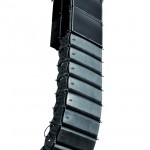 This second part of our line array series deals with the physical aspects of such sound systems. Quite a complex subject yet we have tried to give you a comprehensible access.
This second part of our line array series deals with the physical aspects of such sound systems. Quite a complex subject yet we have tried to give you a comprehensible access.
The basic problem of every sound reinforcement system for large venues is the fact that an individual speaker cabinet cannot supply the complete audience with the required sound pressure level. Even if the audible transmission range between 20 Hz and 20 kHz is separated into five or more different speaker sizes, the necessary characteristics required for audiences with thousands or even a hundred thousands of people cannot be produced – even with the latest technology.
Furthermore, destructive interference occurs even when using only two speakers at once. Interference occurs when sound waves from two different sources overlap and lead to undesired amplification or elimination of parts of the frequency range. The aim of every sound reinforcement system is to minimize destructive interference and to provide the desired signal level at every position in the audience are.
For reaching this aim, speaker clusters were used for a long period of time where several technically identical speaker systems are horizontally and vertically grouped together. Due to sophisticated cabinet constructions and the use of horns in front of the individual drivers, the efficiency, i.e. the realistic electric power converted into sound pressure level, could be increased while reducing the interference areas within the crossover areas between the individual speaker systems to an acceptable level and thus getting closer to a physically ideal point source.
The sound pressure level is reduced by 6 dB for every doubling of the distance from the speaker system, although this only applies to ball waves, i.e. undirected sound sources. Especially in closed rooms, a point is very fast reached where the diffuse sound, i.e. the sound reflecting from the walls and ceiling, reaches the same level as the direct sound from the speaker system. From this point on, the destructive interference is so strong that the acoustic performance can only be recognized in a strongly falsified manner. This distance is referred to as critical distance. One solution is applying delay lines where the transmitted signal is “refreshed” before the critical distance, thus enabling a large or longer audience area at large venues. Nevertheless, the delay speakers must reproduce the signal with a delay as the speed difference between acoustic and electric signal transmission is already audible from only 20 meters away. This is where the name “delay line” comes from.
Another disadvantage of this procedure is the significant sound level loss even among the first meters of the audience area. According to the already cited formula, the sound pressure level at eight meters distance is only one eighth of the level in one meter distance from the speaker system clusters. Often, this problem was solved by more volume which is not only a health hazard in the stage area, but may also have a negative effect on the sound quality and sound level on the stage and which can no longer be recommended with today’s emission guidelines.
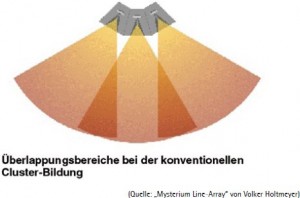 Line arrays are the next logical step in this chain of cause and consequence. With line arrays, it is possible to minimize the basic problems of conventional cluster systems. With line arrays, it is possible to minimize interference between the vertically aligned speaker systems by a vertical dispersion of less than 15°, to increase the coverage and to keep the sound pressure level constant for the maximum number of people in the audience by curving the system, i.e. setting the individual components at a specified inclination angle. Furthermore, line arrays can realize a larger horizontal dispersion angle than horn systems.
Line arrays are the next logical step in this chain of cause and consequence. With line arrays, it is possible to minimize the basic problems of conventional cluster systems. With line arrays, it is possible to minimize interference between the vertically aligned speaker systems by a vertical dispersion of less than 15°, to increase the coverage and to keep the sound pressure level constant for the maximum number of people in the audience by curving the system, i.e. setting the individual components at a specified inclination angle. Furthermore, line arrays can realize a larger horizontal dispersion angle than horn systems.
In order to realize this, some physical problems need to be solved. While the vertical alignment of several low speakers or mid speakers is easy and already applied in the column speakers as described above, more problems occur with higher frequencies. Thus it is not possible to realize the necessary, very low distance between high speakers via standard horn speakers or cone speakers. This distance between the speakers and the number of signal sources in vertical alignment and the curving angle is very important for the acoustic aim of the line array technology: the production of a coherent wave front.
In order to reach this aim nevertheless, so-called wave guides are used. They enlarge the output of the individual sound source which makes a very low distance between several vertically aligned sound sources possible. Additionally, these wave guides modify the delays of the sound waves in the transmission area of the hi speaker in a way that building a coherent wave front is possible.
With an ideal line array, a sound pressure level loss of only 3 dB for doubling the distance could be realized, in reality and depending on the system and the number of elements used, this value lies somewhere between the ideal 3 dB and the 6 dB of a cluster system. Thus using delay lines is still necessary especially for larger venues, but within a higher distance to the main PA. The reason is the improved directivity of the systems in comparison to conventional horn speakers.
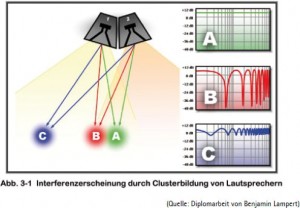 Introducing line arrays led to a reduction of individual speakers up to one quarter which provided additional resources for lighting and video technology. With the introduction of the DMX protocol in 1990, it was especially the concurrent digitization of the lighting technology that considerably benefited from the smaller and lighter sound reinforcement systems.
Introducing line arrays led to a reduction of individual speakers up to one quarter which provided additional resources for lighting and video technology. With the introduction of the DMX protocol in 1990, it was especially the concurrent digitization of the lighting technology that considerably benefited from the smaller and lighter sound reinforcement systems.



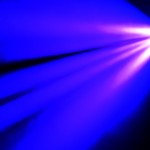
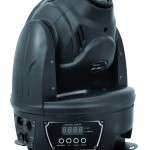

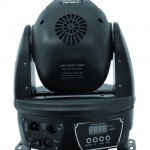
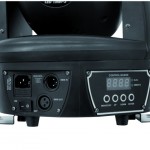
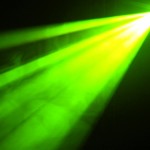
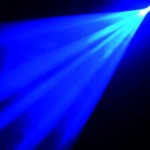
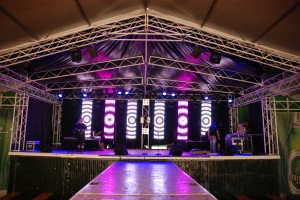 Folk festivals enjoy a long standing tradition in Germany. Everywhere in the country, these celebrations abound. Generally with many carnival rides, tossing and shooting galleries, concession stands and the obligatory beer tents. It’s no different at the Nürnberg folk festival. Every spring and fall, the folk festival takes place at the Nürnberger Dutzendteich Park and attracts round about four million visitors. Somewhat bigger than a parish fair. Yet not only is the size of the spring and fall festival notable. Where musical entertainment is concerned, the operators offer something truly unique with their rocktent. Seating for 6,000 on over 3,300 m². A different band plays every night. And the tent is full nearly every night. No wonder. Especially the youth often wish for an alternative to the classical brass and wind ensembles. And this rocktent successfully offers just such a diversion. The rocktent has been an integral part of the folk festival world for the past 17 years and has meanwhile developed by leaps and bounds into a real attraction, without which modern folk festivals would be unthinkable. Sadis Event Management Service has organized the rocktent since 2008. Responsible for the realization is Christian Sandmann. A good selection of bands isn’t the only thing important to him. The right illumination to put the bands in the limelight is equally important. “A good show needs good music and good lighting” asserts Christian Sandmann. He therefore puts special trust in EUROLITE and FUTURELIGHT brand products on his 30 meter wide stage. “A large stage demands versatile and assertive equipment, and with EUROLITE and FUTURELIGHT I’ve got a good set-up“ so Christian Sandmann. The bands are enthusiastic about the illumination as well, he explains. Not surprising, judging from the deployed arsenal of lighting effects. This year the stage was lit-up with over 50 PAR spotlights, countless moving heads, among which the new FUTURELIGHT Eye-36 could be found, and a pixel mesh in four parts. Additional installations included audience blinders, theater spots, strobes and effect lighting. Next spring it will start all over again. Visitors will come to the folk festival, stream into the rocktent, and surely be thrilled with the music and the lighting. Who says traditional and modern ways of life can’t complement one another? The folk festival in
Folk festivals enjoy a long standing tradition in Germany. Everywhere in the country, these celebrations abound. Generally with many carnival rides, tossing and shooting galleries, concession stands and the obligatory beer tents. It’s no different at the Nürnberg folk festival. Every spring and fall, the folk festival takes place at the Nürnberger Dutzendteich Park and attracts round about four million visitors. Somewhat bigger than a parish fair. Yet not only is the size of the spring and fall festival notable. Where musical entertainment is concerned, the operators offer something truly unique with their rocktent. Seating for 6,000 on over 3,300 m². A different band plays every night. And the tent is full nearly every night. No wonder. Especially the youth often wish for an alternative to the classical brass and wind ensembles. And this rocktent successfully offers just such a diversion. The rocktent has been an integral part of the folk festival world for the past 17 years and has meanwhile developed by leaps and bounds into a real attraction, without which modern folk festivals would be unthinkable. Sadis Event Management Service has organized the rocktent since 2008. Responsible for the realization is Christian Sandmann. A good selection of bands isn’t the only thing important to him. The right illumination to put the bands in the limelight is equally important. “A good show needs good music and good lighting” asserts Christian Sandmann. He therefore puts special trust in EUROLITE and FUTURELIGHT brand products on his 30 meter wide stage. “A large stage demands versatile and assertive equipment, and with EUROLITE and FUTURELIGHT I’ve got a good set-up“ so Christian Sandmann. The bands are enthusiastic about the illumination as well, he explains. Not surprising, judging from the deployed arsenal of lighting effects. This year the stage was lit-up with over 50 PAR spotlights, countless moving heads, among which the new FUTURELIGHT Eye-36 could be found, and a pixel mesh in four parts. Additional installations included audience blinders, theater spots, strobes and effect lighting. Next spring it will start all over again. Visitors will come to the folk festival, stream into the rocktent, and surely be thrilled with the music and the lighting. Who says traditional and modern ways of life can’t complement one another? The folk festival in